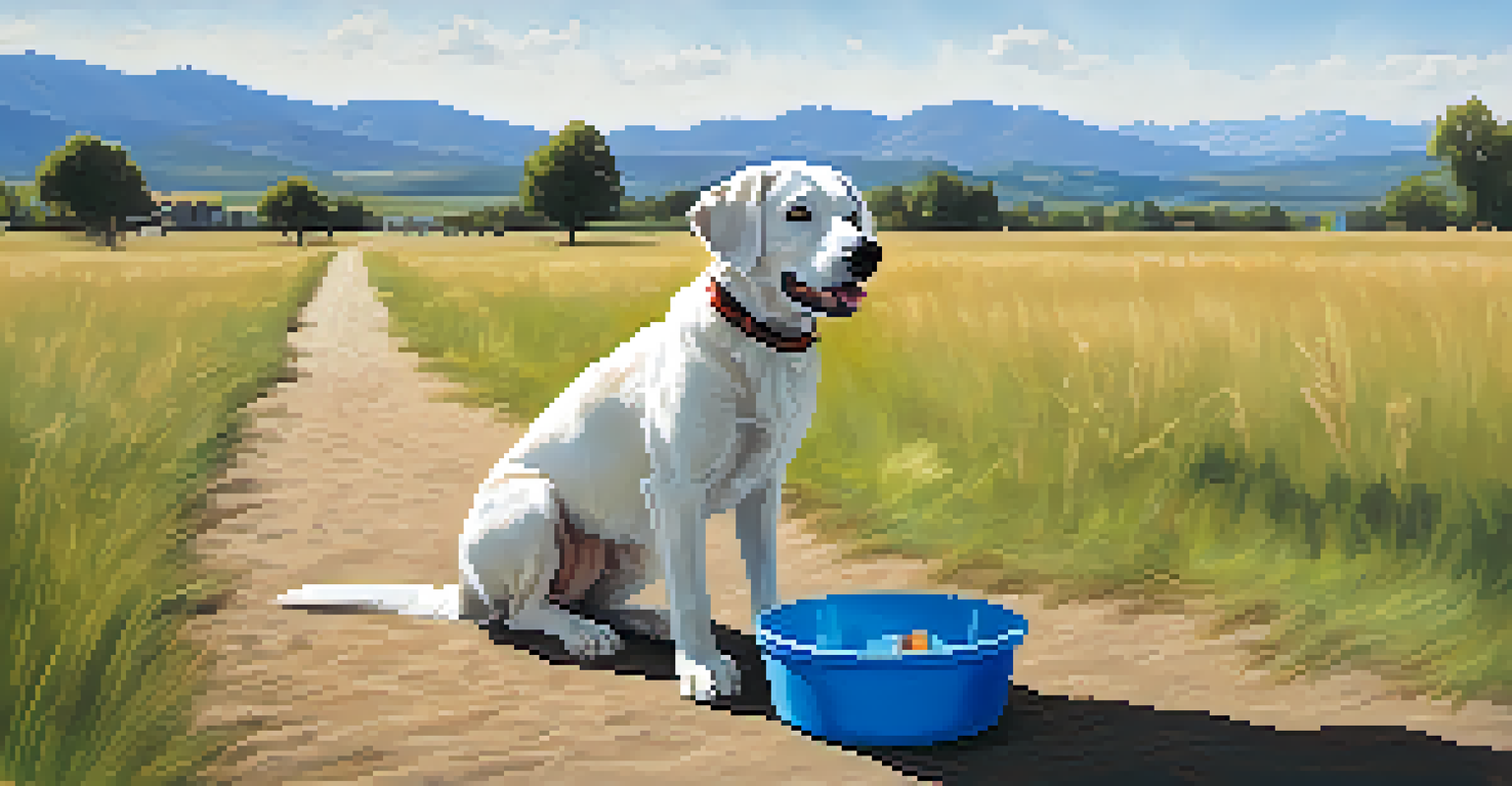Keeping Your Pet Calm and Relaxed During Travel

Understanding Your Pet's Travel Anxiety
Traveling can be stressful for pets, just like it is for us. Many animals experience anxiety in new environments, loud noises, or during long car rides. Understanding this anxiety is the first step in helping your furry friend feel more secure.
Traveling with pets can be a delightful adventure, but it requires understanding their needs and emotions.
Signs of travel anxiety can include excessive barking, panting, or trying to hide. Just like us, pets can feel overwhelmed when faced with unfamiliar situations. Recognizing these signs can help you take action before your journey begins.
By acknowledging your pet's feelings, you can create a plan that eases their stress. This might involve preparing them for the trip or finding ways to keep them calm during travel.
Preparing Your Pet Before the Journey
Preparation is key when it comes to keeping your pet calm. Start by getting your pet accustomed to their travel carrier or crate well in advance of your trip. Allow them to explore it and even take naps inside to create a sense of comfort.

You should also consider a trial run with short car rides. Gradually increasing the length of these rides can help your pet adjust to longer trips. This way, they can associate car travel with positive experiences, like treats or playtime.
Recognizing Travel Anxiety in Pets
Understanding the signs of travel anxiety in pets helps owners take proactive steps to ease their stress.
Don’t forget to pack your pet's favorite toys, blanket, or bed. Familiar items can provide comfort and a sense of security while on the road.
Choosing the Right Travel Gear for Your Pet
Selecting the right travel gear can make a huge difference in your pet's comfort. Invest in a sturdy and comfortable pet carrier that fits your pet well. A carrier that is too small can make them feel cramped and anxious.
A journey of a thousand miles begins with a single step, and that step is to ensure your pet feels safe and secure.
Additionally, consider using a harness instead of a collar while in the car. A harness provides better support and can prevent injury during sudden stops. It’s also a safer option for pets that might otherwise try to escape.
Finally, don’t overlook the importance of a good seat cover or protective blanket for your car. This not only keeps your vehicle clean but also helps your pet feel more secure in their space.
Staying Calm and Collected Yourself
Your demeanor can significantly impact your pet's comfort level. If you’re feeling stressed or anxious about the trip, your pet might pick up on that energy. Stay as calm and collected as possible to help reassure your furry friend.
Before you head out, take a few deep breaths or practice some relaxation techniques. This can set a positive tone for the journey ahead. Your calmness can be contagious, helping your pet feel more at ease.
Preparation is Key for Calm Travel
Getting pets accustomed to their travel gear and routine can significantly reduce anxiety during trips.
Remember, pets can sense our emotions, so try to maintain a relaxed atmosphere. Bring along soothing music or calming scents that can help both you and your pet unwind.
Utilizing Calming Aids and Techniques
There are various calming aids available that can help soothe your pet during travel. From pheromone sprays to calming collars, these products are designed to reduce anxiety. Always consult your vet before trying new products to ensure they are safe for your pet.
Natural remedies, such as lavender or chamomile, can also be beneficial. These scents have calming properties and can help create a relaxing environment for your pet. Just a few drops on their blanket or in the car can make a difference.
Additionally, you might consider training your pet to respond to calming commands, like 'settle' or 'relax.' Reinforcing these commands during travel can help your pet learn to calm themselves in stressful situations.
Taking Breaks for Exercise and Relief
During long trips, it's crucial to take regular breaks for your pet. Stopping every couple of hours allows your pet to stretch their legs, relieve themselves, and explore their surroundings. This can help reduce anxiety and restlessness.
Use these breaks to engage in quick play sessions or go for a short walk. This not only helps your pet release pent-up energy but also provides a welcome distraction from travel stress. Plus, it's a great way for you to bond!
Creating a Comfortable Arrival
Setting up a familiar space for pets at the destination helps them adjust and feel secure in a new environment.
Don’t forget to offer water during these breaks to keep your pet hydrated. A well-hydrated pet is usually a more relaxed pet, making the journey more enjoyable for both of you.
Arriving at Your Destination: Making It Comfortable
Once you arrive at your destination, it’s important to create a welcoming environment for your pet. Set up a familiar space with their bed, toys, and food to help them feel at home. This can significantly reduce any stress they might feel in a new setting.
Give your pet some time to explore their new surroundings at their own pace. Just like us, pets need time to adjust to unfamiliar places. Allowing them this space can help them feel more secure and less overwhelmed.

Lastly, maintain your pet's routine as closely as possible to provide stability. Regular feeding times and walks can help your pet settle in and feel comfortable in their new environment.